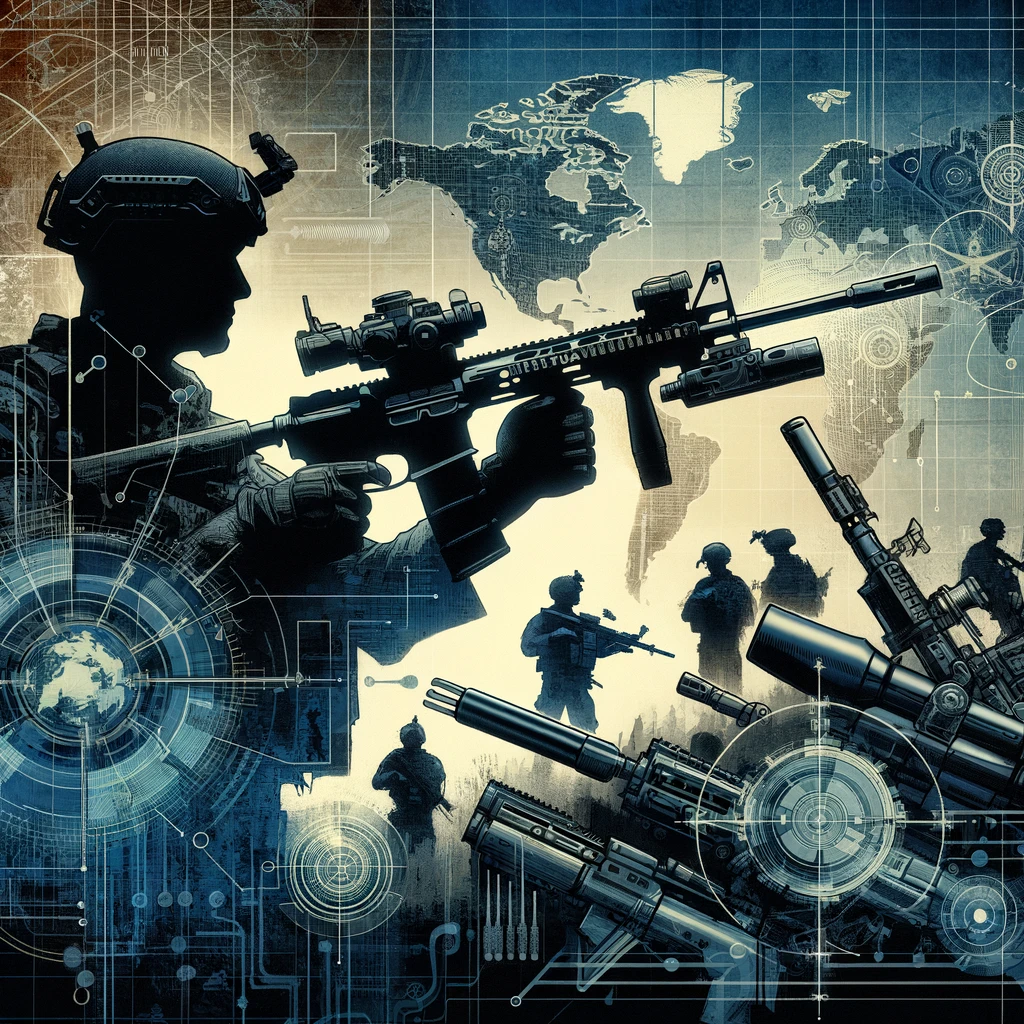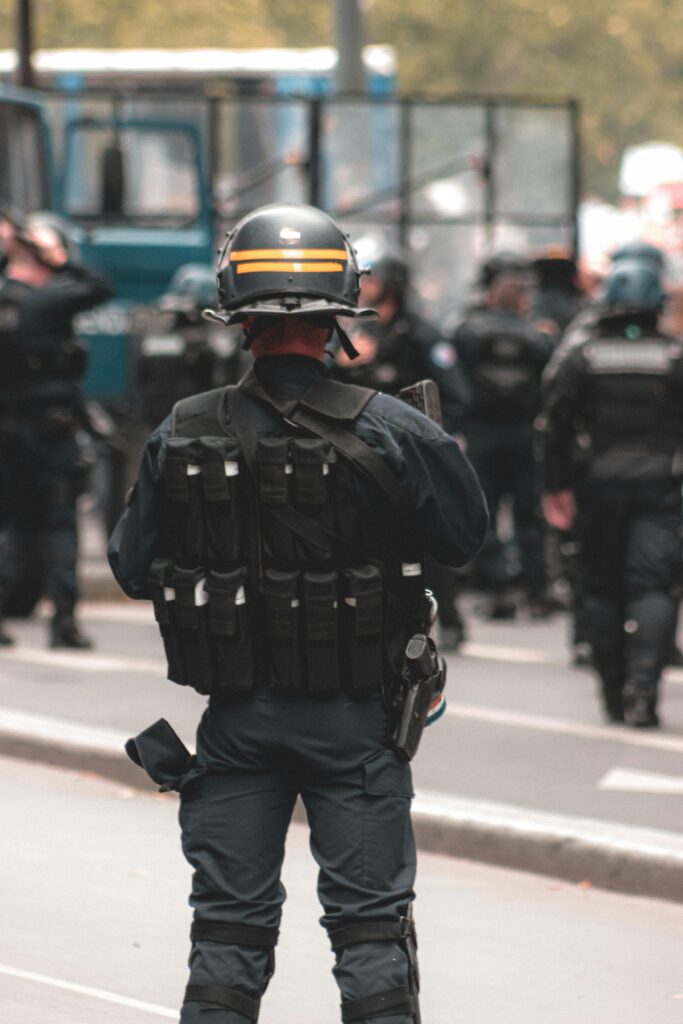
Introduction
Firearm procurement for defense forces is a critical and complex process. In theory it ensures military personnel are equipped with reliable, effective weapons.
In practice it’s a murky world of political favors, lobbying, huge discounts and positions on the board when the people in question leave public service. Firearms procurement has also proved to be a way to put independent nations on a leash with massive loans and cheap arms supply turning foreign nations into indentured servants.
All the big boys are at it, by the way, but the United States of America is a world leader in the field.
The picture perfect process involves identifying requirements, evaluating options, negotiating contracts, and managing logistics. Effective procurement strategies are crucial for maintaining a country’s defense capabilities and operational readiness.
Identifying Requirements
The first step in firearm procurement is identifying the specific needs of the defense forces. Russia found out the demands of war and simply ran out of AK-47s at one point. So it sent Russian troops to fight in the Ukraine with old Mosin Nagants and other bolt action rifles they found in a broom cupboard. That’s not a good look for a superpower, but it never anticipated demand outstripping supply like that. In short, Russia did not identify its requirements at all well.
Requirements are often shaped by lessons learned from past operations and emerging military doctrines. But everybody still makes mistakes and kits their soldiers out with unnecessary gear that just doesn’t work.
Evaluation and Selection
Once requirements are established, the procurement process involves evaluating available firearm options. This can include existing weapons platforms, modifications of current systems, or the development of new technologies.
Evaluation criteria might encompass effectiveness, reliability, durability, ease of maintenance, and total lifecycle costs. Trials and testing are critical components of this phase, ensuring that selected firearms meet or exceed operational requirements.
It is a fact of life that elite military units and smaller teams can get the best and newest weapons first. That helps the military test the weapons in real life conditions, too, which can reveal fatal flaws and save the military and expensive mistake. That can even be a solid procurement strategy and would have save the US military from adopting the Sig P320 en masse before it started developing ‘negligent discharge’ issues.
Procurement Strategies
Procurement strategies vary depending on the scale of the acquisition, budget constraints, and urgency. Strategies may involve competitive bidding, direct negotiations with manufacturers, or government-to-government deals. Defense forces often seek to balance cost-effectiveness with the need for advanced capabilities, considering both off-the-shelf purchases and long-term development contracts.
Challenges in Firearm Procurement
- Technological Advancements: Rapid advances in firearm technology and materials science can make procurement decisions challenging, as defense forces must anticipate future tech.
- Budget Constraints: Financial limitations are a significant challenge, requiring careful prioritization of procurement projects.
- Political and Strategic Considerations: Procurement decisions can be influenced by political factors and strategic alliances.
- Logistical and Support Considerations: The availability of ammunition, spare parts, and maintenance infrastructure are crucial for new firearms.
International Cooperation and Alliances
International cooperation and alliances, such as NATO, play a significant role in firearm procurement. Standardization agreements can simplify procurement processes, enhance interoperability among allied forces, and provide opportunities for joint development programs. However, international agreements also require navigating complex diplomatic and regulatory landscapes.
Future Trends in Firearm Procurement
- Smart Weapon Systems: The integration of advanced optics, targeting systems, and connectivity options is likely to influence future procurement decisions.
- Modularity and Customization: There is a growing trend towards modular firearm systems that can be easily customized for different roles and missions.
- Sustainability and Environmental Considerations: Environmental sustainability is becoming an important factor in procurement, with defense forces looking at the environmental impact of manufacturing, operation, and disposal of firearms.
Conclusion
Firearm procurement for defense forces is a multifaceted process that requires careful planning, rigorous evaluation, and strategic foresight. As defense forces navigate the challenges of modernizing their arsenals, the procurement process must adapt to changing technological landscapes, fiscal realities, and geopolitical dynamics.
FAQ
1. What factors influence the procurement of firearms for defense forces?
Defense forces assess current and future needs, evaluating weapon performance, reliability, and ease of maintenance. Political and strategic considerations, such as international alliances, also play a crucial role. The goal is to ensure that new firearms enhance military effectiveness while aligning with fiscal and strategic priorities.
2. How do defense forces evaluate and select firearms?
Defense forces conduct a comprehensive evaluation process that involves trials, testing, and analysis to compare available firearm options against established criteria. This process considers effectiveness, durability, logistical support, and lifecycle costs.
Trials often simulate operational conditions to assess weapon performance in real-world scenarios. Feedback from military personnel and lessons learned from previous engagements are also integral to the selection process.
3. Why are international standards and cooperation important in firearm procurement?
International standards and cooperation facilitate interoperability among allied forces, allowing for seamless joint operations. Standardization agreements, such as those within NATO, simplify logistics, reduce costs, and enhance the collective defense capability. Joint development programs and international procurement initiatives can leverage shared technological advancements and distribute development costs.
4. What are the main challenges in procuring firearms for military use?
Key challenges include keeping pace with rapid technological advancements, managing budget constraints, and addressing political and strategic factors. Procurement processes must also consider the sustainability and environmental impact of firearms throughout their lifecycle. Logistical considerations, such as ammunition compatibility and maintenance support, are critical to ensuring the long-term viability and effectiveness of procured weapons.
5. How is the future of firearm procurement for defense forces shaping up?
The future of firearm procurement is likely to focus on smart weapon systems incorporating advanced targeting technologies, modularity for customized configurations, and sustainability considerations.
Emerging threats and changing operational environments will drive the development of firearms that offer enhanced lethality, accuracy, and connectivity. Defense forces will increasingly prioritize systems that provide tactical advantages while being adaptable to future technological innovations and battlefield requirements.


